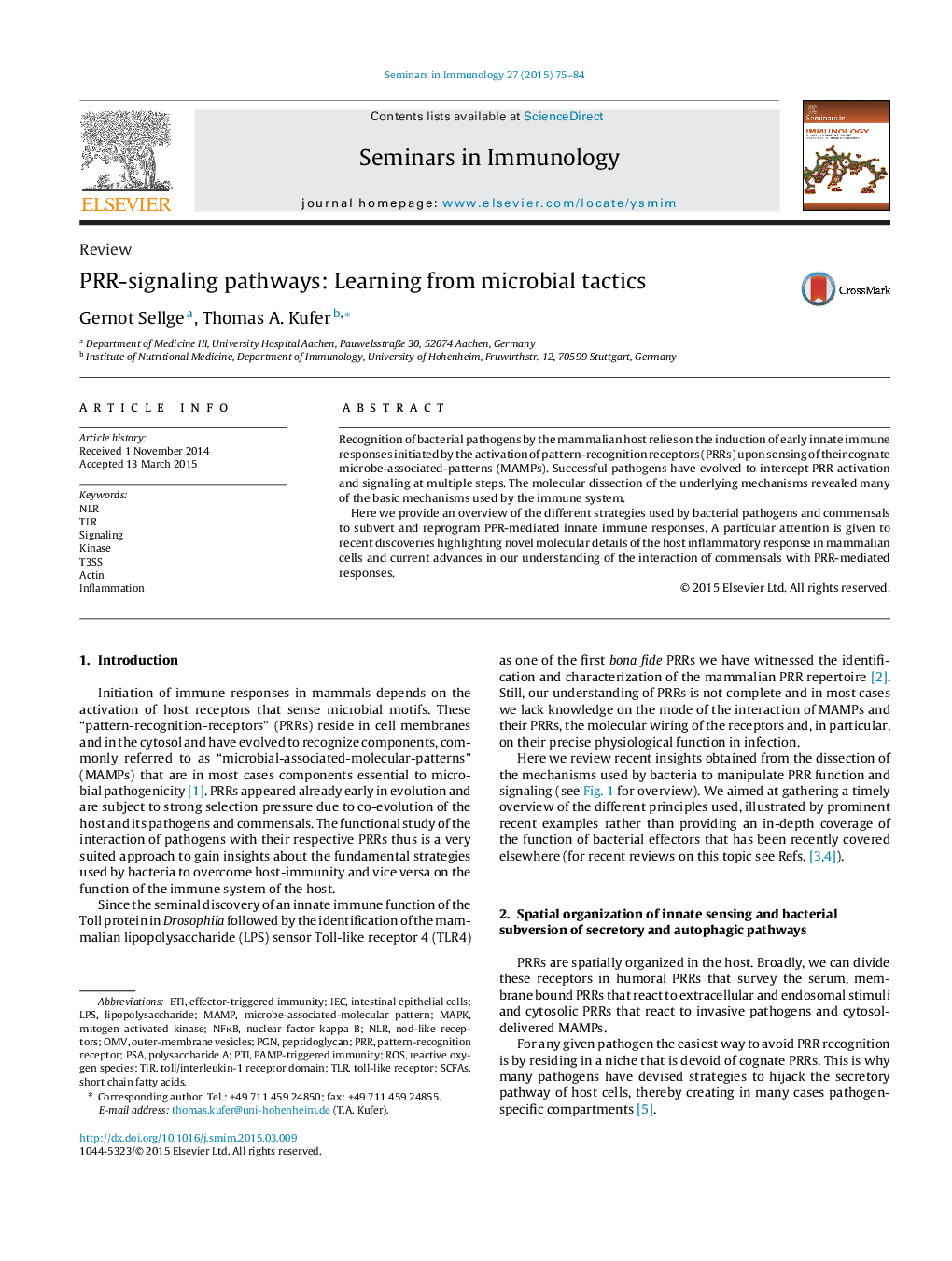| کد مقاله | کد نشریه | سال انتشار | مقاله انگلیسی | نسخه تمام متن |
|---|---|---|---|---|
| 3391366 | 1221039 | 2015 | 10 صفحه PDF | دانلود رایگان |

• Pathogens use multiple PRR subversion mechanisms to establish infections.
• The host can sense bacterial-induced modifications of signaling events.
• Activation and alterations of PRR-signaling by commensals assures homeostasis.
Recognition of bacterial pathogens by the mammalian host relies on the induction of early innate immune responses initiated by the activation of pattern-recognition receptors (PRRs) upon sensing of their cognate microbe-associated-patterns (MAMPs). Successful pathogens have evolved to intercept PRR activation and signaling at multiple steps. The molecular dissection of the underlying mechanisms revealed many of the basic mechanisms used by the immune system.Here we provide an overview of the different strategies used by bacterial pathogens and commensals to subvert and reprogram PPR-mediated innate immune responses. A particular attention is given to recent discoveries highlighting novel molecular details of the host inflammatory response in mammalian cells and current advances in our understanding of the interaction of commensals with PRR-mediated responses.
Journal: Seminars in Immunology - Volume 27, Issue 2, March 2015, Pages 75–84